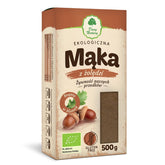seasonal food. Why and how to eat seasonally?
CONTENTS
In the world of dietetics, there are many nutritional models. Nutritionists and dieticians argue about what and how one should eat to maintain good health and a well-shaped figure. Regardless of your approach, however, there are some principles everyone agrees on. One of them is eating seasonal produce.
Why are seasonal products important?
Nowadays we can buy practically any fruit and vegetable in stores at any time of year. Sometimes they will be harder to find, but if we make a little effort we will definitely find them. But the question is, is it worth it? After all, we know very well that summer vegetables and winter fruit do not taste the same. The taste alone proves the lower quality of out-of-season produce. Why is that? Because they are grown under completely different conditions, e.g. in a greenhouse with artificial light, they are given much more fertilizer to enable them to grow. All of this does not improve the nutritional value of produce that is in season in completely different months.
It's also possible that produce from the current season has arrived from very far away. It's grown in other countries during the local season and is intended for export. Unfortunately, this process usually takes a relatively long time. During transport, these products lose many valuable vitamins and minerals, as time always works against the harvest. To ensure they even reach us, they must be properly protected with preservatives, which naturally reduces their quality and nutritional value.
In addition to the fact that seasonal produce is healthiest for our bodies, an additional advantage is their relatively low price. This means we pay the same amount for a basket of strawberries in June as we do for a tiny plastic basket in January. And, as already mentioned, their taste is incomparable.
How do you eat seasonally?
We usually intuitively know what should be on our menu at a particular time of year. Especially in summer, when the stalls are buckling under the weight of invigorating vegetables and fruits , we have no problem choosing. We eat fresh strawberries, raspberries, tomatoes, and cucumbers. In fact, they appear as early as spring in the form of early vegetables. However, it is worth paying special attention to them, as suppliers are currently competing with each other to deliver these products to us as quickly as possible. It happens that they use numerous supporting measures. While we think we are eating healthy, fresh, young vegetables, it happens that we are actually providing ourselves with a chemical bomb.
Autumn is also a time when the colors of the produce stands delight the eye. There are orange pumpkins, purple plums, red or green apples. Let's hurry to use these delicacies, because their luscious colors are the best proof of their nutritional value.
Sometimes the problem arises in winter. Not all of us know which vegetables and fruits can be considered winter. Of course, we can also enjoy some autumnal delicacies at this time of year, because if stored properly – in cool conditions – they hardly lose any of their value. And yes, we can keep pumpkins, apples, and potatoes in our pantry, for example. Typical winter vegetables are Brussels sprouts, kale, and root vegetables.
In addition, there are plenty of vegetables and fruits available year-round, such as onions , mushrooms, and various types of cabbage. Let's not forget cucumbers, which are available year-round, as their value to our health cannot be overestimated. Also, remember that we don't have to completely abandon produce grown in another season. Simply preparing frozen foods during the correct month of growth is enough—this is the healthiest way to store food, as it retains most of the vitamins and minerals found in fresh produce.
If you're unsure about which month to include certain vegetables and fruits in your menu, it's worth using one of the numerous produce seasonal calendars available online. Finally, remember to exercise moderation with the principle of seasonality in vegetables and fruits, as with everything else. Let's try to put it into practice and eat healthy, but if we occasionally eat strawberries in January (preferably washed down with champagne), nothing bad will happen.
THE PUBLISHER'S CHOICE
Dried plums 1 kg BIOGO
- £6.08
- £6.08
- Prezzo unitario
- / per
Dried White Mulberries 500 g ORGANIC
- £5.06
- £5.06
- Prezzo unitario
- / per
Almonds 1 kg BIOGO
- £10.14
- £10.14
- Prezzo unitario
- / per
Cranberries sweetened with apple juice organic 1 kg BIOGO
- £14.20
- £14.20
- Prezzo unitario
- / per
Dried dates 1 kg BIOGO
- £3.65
- £3.65
- Prezzo unitario
- / per
Unpeeled buckwheat groats 1 kg BIOGO
- £2.44
- £2.44
- Prezzo unitario
- / per
Walnuts 800 g BIOGO
- £7.50
- £7.50
- Prezzo unitario
- / per
Peeled sunflower seeds 1 kg BIOGO
- £2.64
- £2.64
- Prezzo unitario
- / per
PULLED ORGANIC SUNFLOWER SEEDS 1 KG BIOGO
- £3.85
- £3.85
- Prezzo unitario
- / per












































































































































